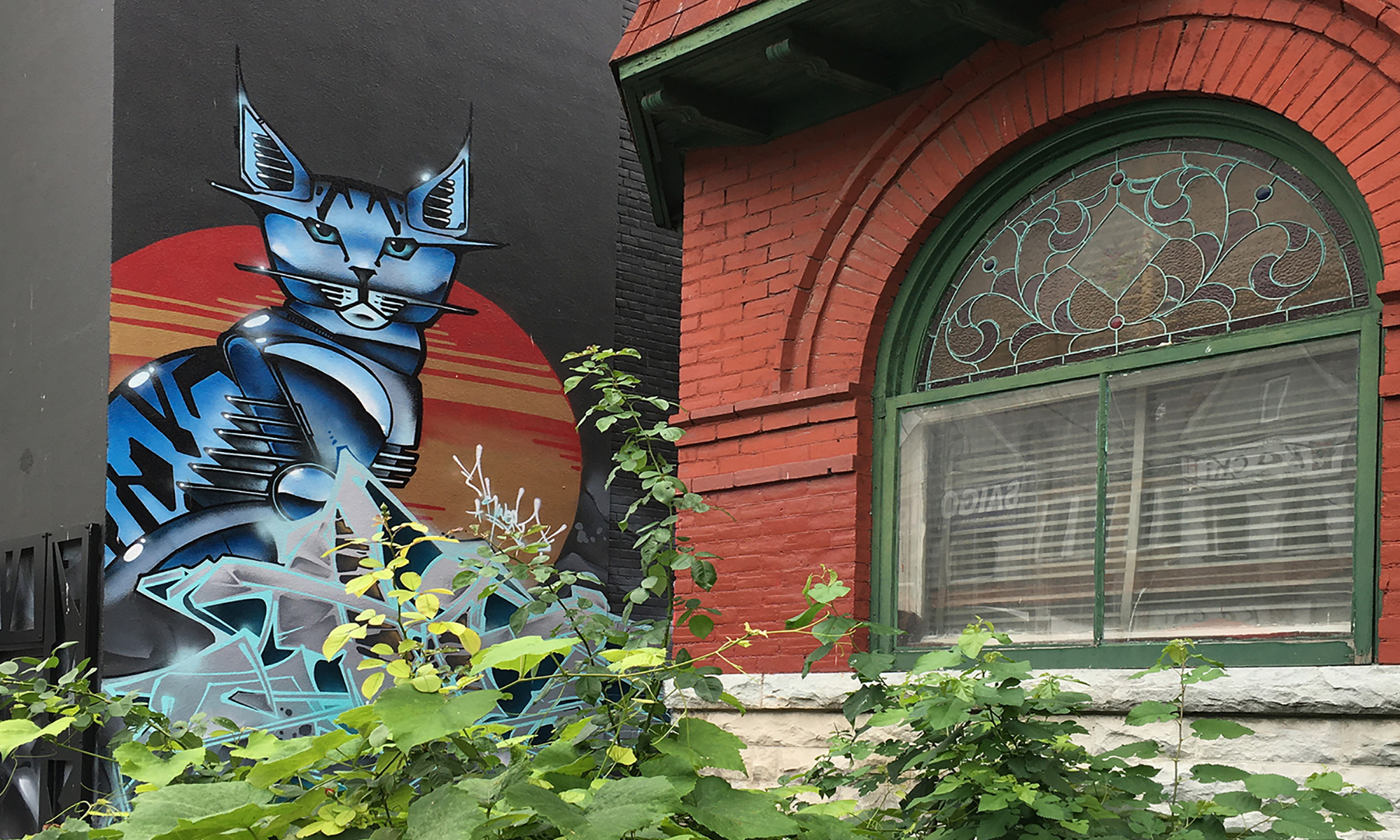In the 1950s and 1960s, Kensington Market became the social and cultural hub for Portuguese, Brazilian, and Hungarian immigrants and Afro-Canadians.[1] In the mid-1950s, a third wave of Jewish immigrants fled the Hungarian Revolution and settled in Kensington Market.[2] When the Grossberger family arrived from Hungary, they immediately purchased a store at Nassau Street and Bellevue Street to find themselves “surrounded by the Portuguese.”[3] Portuguese settlement changed the face of Kensington Market. The new inhabitants painted their homes in bright Mediterranean hues, created flower and vegetable gardens in front their homes, and adorned their homes with religious statuary.[4] Replacing the solitude of traditional Sundays, Portuguese men would congregate outside the bookstore to hear shortwave broadcasts of soccer games over a loudspeaker.[5] Portuguese men rented men rooms or beds in Victorian homes to save to bring their families over and, for families that had achieved reunification, they doubled up and lived with extended family in Victorian homes.[6] According to Sam Lunansky, son of the Augusta Fruit Market founders, immigrants and their children both worked hard and were disciplined to obtain a higher quality life.[7] The Pavao brothers—John, Victor, Ossie, and Michael—grew up cleaning the poultry store below their three bedroom apartment and working in their parent’s general store called Casa Acoreana on the corner of Baldwin Street and Augusta Avenue.[8] Different from Jewish stores, Portuguese stores were more service-driven, including restaurants, laundromats, and a pool hall.[9] In the 1960s, Portuguese men congregated at the Tivoli Billiards Hall on Augusta Avenue and the Brazilian restaurant on Nassau Street.[10] Similar to the Jewish families, the Gomes family began their business by opening their supermarket in the front of their home.[11] Along with being connected to Kensington Market, the Portuguese actively engaged in groups around the city of Toronto, including the Portuguese Men’s Association and the Portuguese Canadian Congress.[12] Jewish cultural and religious institutions continued to be a hallmark of Kensington Market, particularly the synagogue on Bellevue Avenue.[13]
[clearing]
[1] Cochrane, Kensington, 71.
[2] Ibid, 63.
[3] Ibid, 65.
[4] Carlos Teixeira, “Cultural Resources and Ethnic Entrepreneurship: A Case Study of the Portuguese Real Estate Industry in Toronto,” Canadian Geographer 42:3 (1998): 270.
[5] Cochrane, Kensington, 79.
[6] Ibid, 73.
[7] Anonymous, “The changing face of Kensington Market,” Toronto Star, 25 July 1988.
[8] Anonymous, “‘We were poor,’ says Victor. ‘Full-time poor,’ says John,” Toronto Star, 21 December 2003.
[9] Cochrane, Kensington, 77.
[10] Ibid, 72.
[11] Ibid, 78.
[12] Ibid, 81.
[13] Ibid, 84.

One Reply to “Kensington Market in the 1950s-1960s”
Comments are closed.